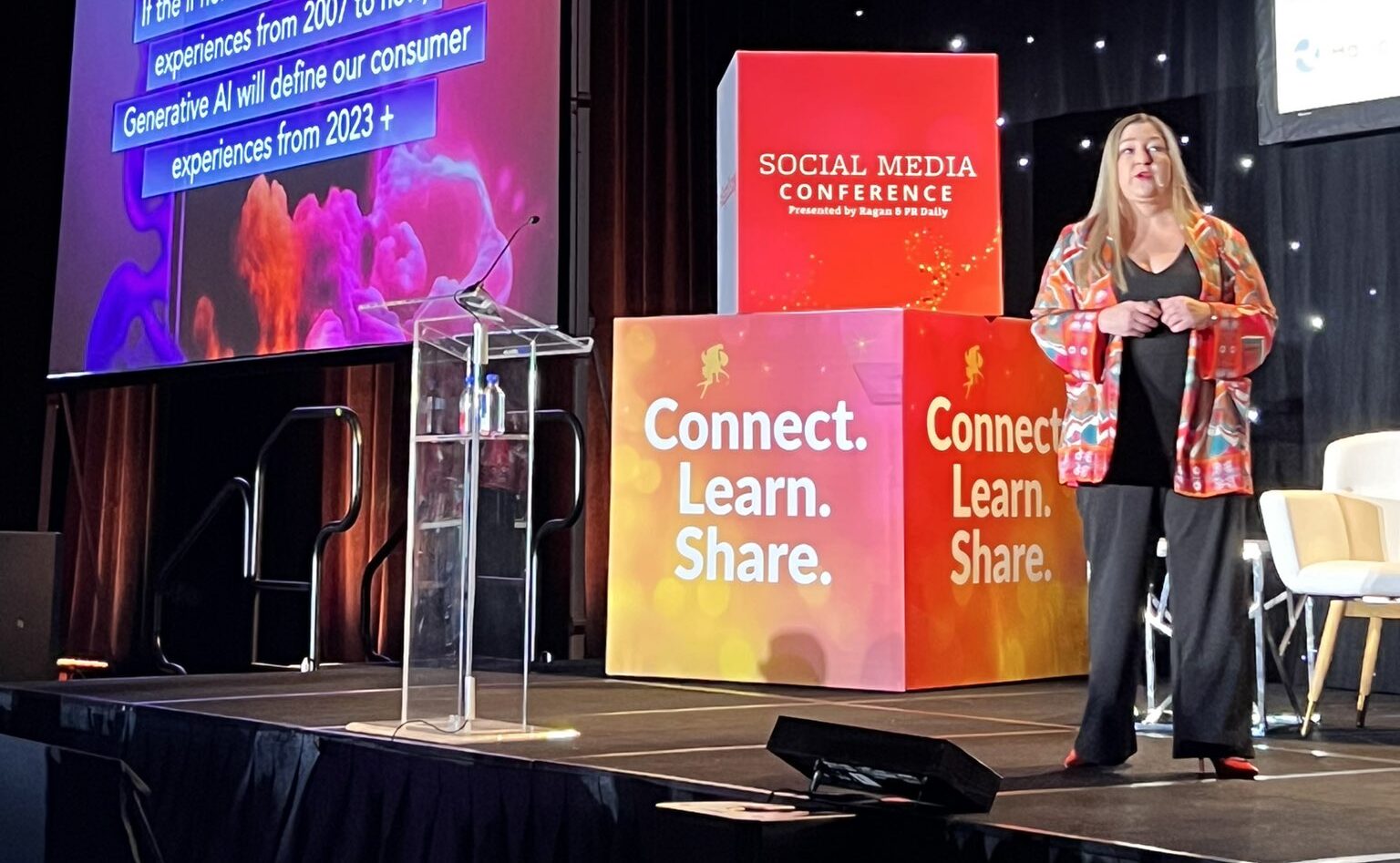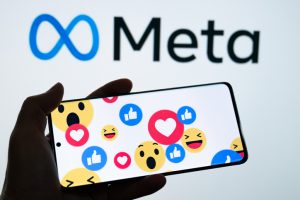AI is the new iPhone
Live coverage from Ragan and PR Daily’s Social Media Conference.

What’s your reaction when you hear the phrase “Web3”?
Excitement? Confusion? An eye roll?
All are valid.
After all, as Cathy Hackl, chief metaverse officer and Web3 strategist for Journey, said during the opening keynote for Ragan and PR Daily’s Social Media Conference Thursday, Web3 isn’t here yet. We’re just on the cusp of something new.
But it’s coming.
Web3 will work to connect people, places and things — in both the virtual and digital worlds.
Hackl gave the example of a digital Forever 21 hat that was created in Roblox. It became a virtual bestseller, adorning avatars in the game. That same design was then made into a real hat you can wear on your actual head — and became a sellout.
“There is real impact, real culture, real things happening in virtual spaces that are impacting the physical world,” Hackl said.
AI is the future
Often when we talk about Web3 or the metaverse, we focus on things like the Roblox example, or the legless world Mark Zuckerberg is trying to create. But Hackl pointed out that the new generative AI craze — linguistic programs like ChatGPT and art tools like DALL-E, are also part of Web3.
“If the iPhone defined our consumer experiences from 2007 to now, generative AI will define our consumer experiences from 2023+,” Hackl explained.
AI will help both people and organizations in a variety of ways. It will inspire us, help us scale and personalize our work, reduce friction, make editing faster, and improve accessibility.
“AI is an abundance technology,” Hackl said. “It’s going to allow us to augment our work and augment our selves in ways we never have before.”
But there’s also fear that comes with AI. Fear that it will do our jobs better than we do, or that it won’t but it’ll be good enough that our bosses may let us go and lean on what robots can do.
Hackl quoted fellow Web3 expert Max Penk on this point: ““Good news: AI will not replace you. Bad news: A person using AI will.”
So now is the time to start considering your AI tech stack — internal and external. How will your customers and stakeholders find you through these tools and use them to interact with you? How will you use these tools to streamline workflows, improve efficiency and expand your capabilities?
Gen Z and Gen Alpha will change the game
The up-and-coming generations are going to demand that the brands they interact with be present in Web3 in some form. Not only is there Gen Z — the generation just behind Millennials, ranging in age from about 11 to 26 — but then you’ve also got Gen Alpha rising. Those are the kids who are currently 10 and under — but they’re going to grow up fast and have new expectations.
And if you want to reach these audiences, you have to stay culturally relevant.
“So my plea to you is not to innovate for the sake of innovation, innovate for cultural relevancy,” Hackl said. “If you want to stay afloat as a brand, as a company, if you want to recruit the best talent, if you want to keep people happy, you kind of have to say culturally relevant.”
That could mean creating a niche online community. It could mean experimenting with NFTs and the blockchain or holding a digital concert.
Web3 is going to look different for each and every brand. But the most important thing is to start experimenting now.
Not all will succeed. But all will help lead us to the future.
“This is about creating community for the long-term, about collaborating and co-creating, and benefiting from the value of our creations as creators.”
Allison Carter is executive editor of PR Daily. Follow her on Twitter or LinkedIn.







